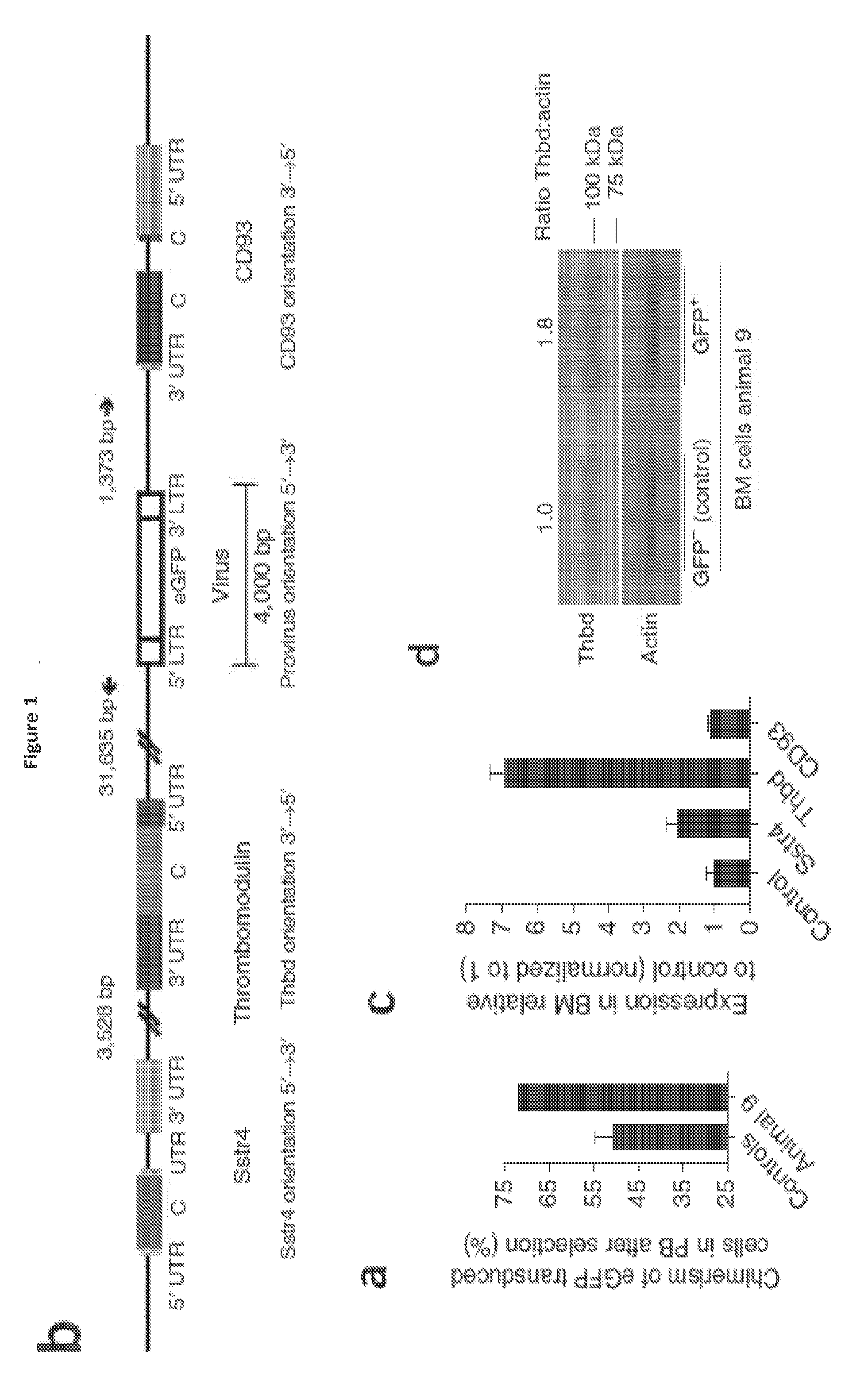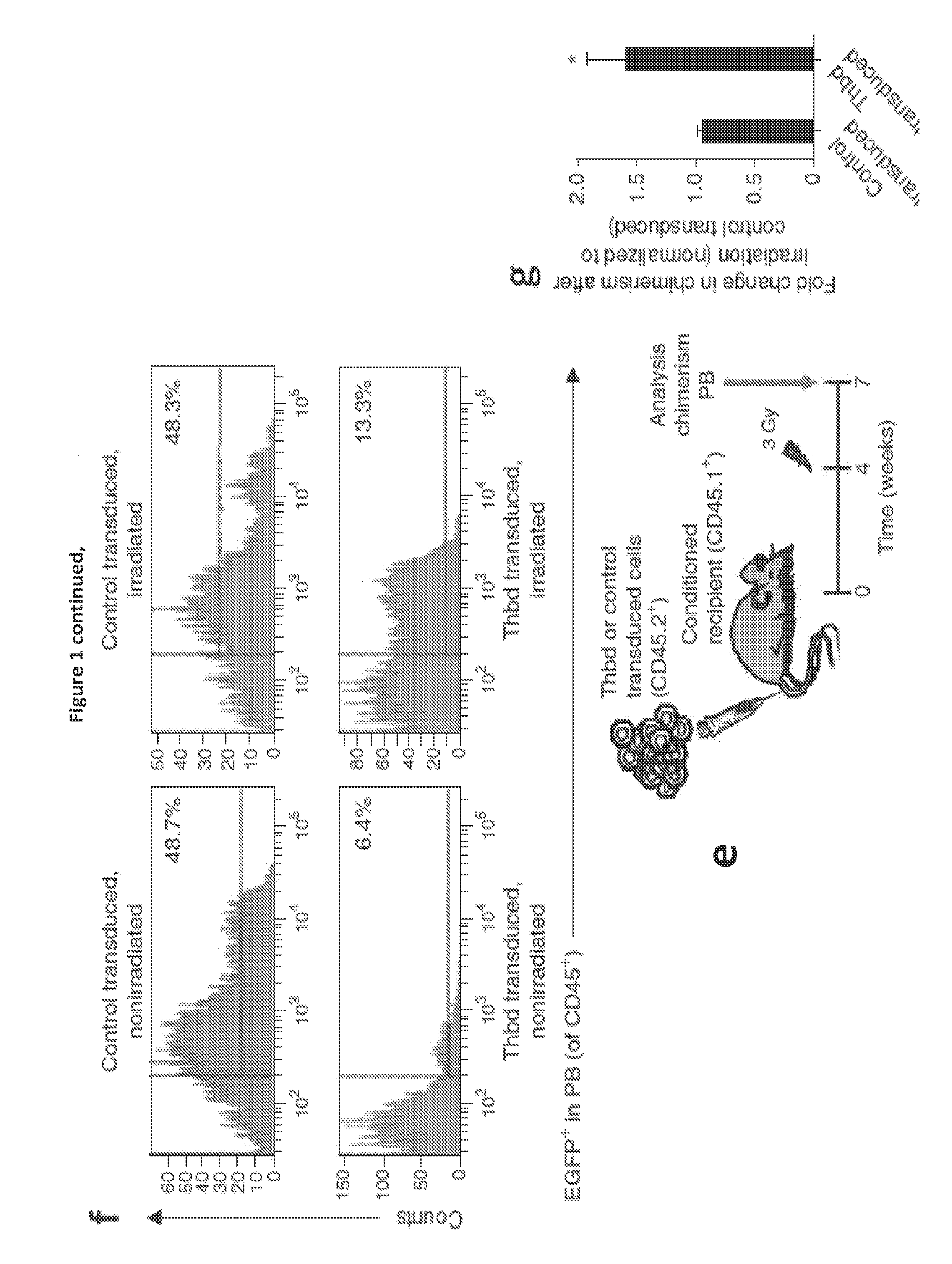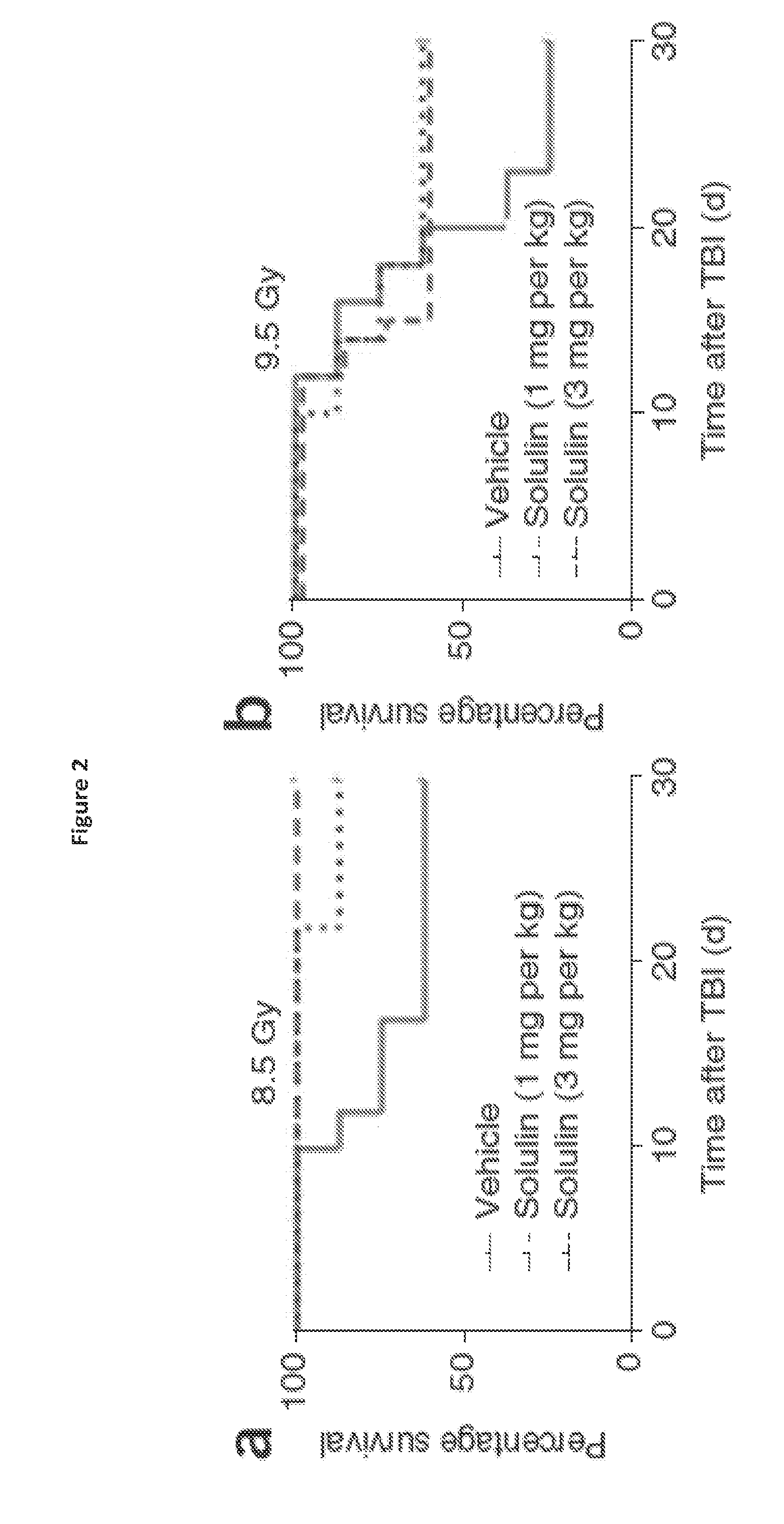Methods for treating and preventing radiation injury using activated protein c polypeptides
- Summary
- Abstract
- Description
- Claims
- Application Information
AI Technical Summary
Benefits of technology
Problems solved by technology
Method used
Image
Examples
embodiments
[0058]In a preferred commercial embodiment, the subject invention is a method to treat a subject exposed to a lethal or sub-lethal dose of radiation with an APC or PC polypeptide by administering to said subject an intravenous or intraperitoneal infusion of said polypeptide in an effective dose to mitigate radiation toxicity.
[0059]In another embodiment, the subject invention is a method to treat a subject exposed to a lethal or sub-lethal dose of chemicals used to myeloablate a subject with APC or PC polypeptide by administering to said subject an intravenous or intraperitoneal infusion in an effective dose to mitigate chemical toxicity.
[0060]In another embodiment, the subject invention is a method to prevent toxicity to radiation or chemicals in a subject wherein an effective dose of APC, PC or a variant thereof is given either before or up to several days after exposure to the toxic insult.
[0061]Unless defined otherwise, all technical and scientific terms used herein have the same...
example 1
Infusion of Recombinant APC and APC / PC Polypeptide Variants
[0063]A series of experimental studies in laboratory mice documented that increased expression of thrombomodulin (Thbd), either by enhancing expression of endogenous Thbd or by direct overexpression of transgenic Thbd via viral transduction of hematopoietic stem and progenitor cells (HSPC), accelerated the recovery and re-expansion of the hematopoietic system after whole body exposure to non-lethal doses (3 Gy) of ionizing radiation. In contrast, reduced expression of endogenous Thbd had the opposite effect. The beneficial effect of Thbd overexpression on hematopoietic recovery from non-lethal radiation exposure was reproduced by intravenous administration of a recombinant form of soluble Thbd. Notably, therapeutic administration of Thbd within 30 minutes following radiation exposure through systemic intravenous infusion also significantly reduced overall mortality of experimental mice exposed to a lethal (LD50) dose of radi...
example 2
Screening for Novel Genes and Pathways Involved in Radiation Mitigation
[0069]To identify novel genes and pathways protecting hematopoietic stem and progenitor cells (HSPCs) against radiation injury, retroviral insertional mutagenesis screens were performed using a replication deficient virus bearing a strong internal promoter expressing enhanced green fluorescent protein (EGFP) (FIG. 5A). At weeks 4, 7, and 10 following BM transfer, recipients were exposed to a single dose of 3 Gy TBI, resulting in three consecutive cycles of radiation-induced contraction and subsequent re-expansion of the hematopoietic system. Viral integration sites in genomic DNA in bone marrow cells from animals in which post-transplant TBI had resulted in a significantly augmented relative abundance of EGFP-positive cells in PB or BM were determined by ligation mediated (LM)-PCR (FIGS. 5B-E; FIG. 15). Loci targeted by integration included genes known to play a role in radioprotection of either hematopoietic or ...
PUM
| Property | Measurement | Unit |
|---|---|---|
| Density | aaaaa | aaaaa |
| Density | aaaaa | aaaaa |
| Density | aaaaa | aaaaa |
Abstract
Description
Claims
Application Information
 Login to View More
Login to View More - Generate Ideas
- Intellectual Property
- Life Sciences
- Materials
- Tech Scout
- Unparalleled Data Quality
- Higher Quality Content
- 60% Fewer Hallucinations
Browse by: Latest US Patents, China's latest patents, Technical Efficacy Thesaurus, Application Domain, Technology Topic, Popular Technical Reports.
© 2025 PatSnap. All rights reserved.Legal|Privacy policy|Modern Slavery Act Transparency Statement|Sitemap|About US| Contact US: help@patsnap.com



